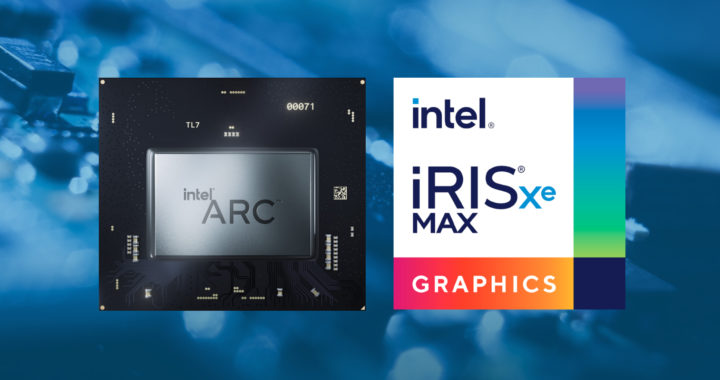There have been several attempts from Intel to expand its product portfolio beyond central processing units or general-purpose processors. The company has been providing graphics solutions since 1998 but it struggled to compete against other chipmakers such as Nvidia and AMD. However, beginning the introduction of its Intel Xe graphics processor microarchitecture in 2020, it has started focusing on developing and marketing lines of graphic processors. The Intel Iris Xe and Intel Arc brands represent two product lines of discrete graphics processing units based on the Intel Xe microarchitecture.
A Comparison Between Intel Iris Xe and Intel Arc Discrete Graphics Processors: What is the Difference Between These Two Brands of Intel GPUs?
Individuals who are unfamiliar with what is happening inside Intel or its demonstrated business and product strategy might get confused with the range of graphic processors it now offers alongside its range of general-purpose and specific-purpose processors. Some thought that the Intel Iris Xe line of graphic processors was slated to become its flagship GPU brand but the introduction of Intel Arc made it clearer that this new brand has been set to compete directly against GPU brands and sub-brands from Nvidia and AMD.
1. Production Background and Technical Specifications
Intel Iris Xe was launched in 2020 and it included the discrete and integrated graphics processor variations and models of the Intel Iris Xe and the more capable Intel Iris Xe Max discrete graphics processor. Intel Arc was launched in 2022 and included several products such as the A750 and A770, other lower-tier graphics processors for desktop computers, specific products for laptops, and professional-grade graphics processors for workstations.
One of the main similarities between Intel Iris Xe and Intel Arc is that both brands of graphics processors are based on the Intel Xe microarchitecture. The earlier generations of Intel Iris Xe GPUs are specifically based on Xe-LP microarchitecture while the Intel Arc is particularly based on the Xe-HPG microarchitecture. Xe-LP is designed for low-power graphics processors while Xe-HPG is used for high-performance and enthusiast-level graphics processors.
The specifications of various Iris Xe graphics processors are different but general specifications such as clock speeds, video RAM size, and input-output features are the same as low-tier Arc graphics processors for desktop and mobile computers. What sets Intel Arc graphics processors apart from Intel Iris Xe is the inclusion of other hardware capabilities, graphics processing features, and wider support for advanced graphics-related technologies.
2. Intended Target Market and Predefined Use Cases
Nevertheless, to understand better the difference between Intel Iris Xe and Intel Arc, it is important to underscore the fact that the former is marketed for the general consumers or mainstream PC market while the latter is marketed for consumers who want a dedicated and more capable but affordable graphics processor. The Iris Xe brand of GPUs is intended as a value-added inclusion in general-purpose desktop and laptop computers.
The specific Iris Xe Max might be the higher-end GPU from the Iris Xe brand but it is still intended for the mainstream consumers. It can handle PC gaming at lower settings and average photo and video editing tasks but does not have enough power to run graphics-taxing game titles and extended or advanced photo and video editing. Intel Arc was developed specifically for the purpose of high-performance graphics processing requirements.
Price and availability are also another difference. An Iris Xe GPU is not available as a standalone hardware product. It comes either as an integrated GPU in an Intel Core processor or as a discrete GPU that is part of an end-use desktop or laptop computer. An Arc GPU can be purchased as a separate hardware component or as an included component of end-use desktop and laptop computers from PC manufacturers and PC brands.
3. Graphics Processing Capabilities and Performance
Remember that specific hardware specifications and features set the difference between Intel Iris Xe and Intel Arc. It is important to reiterate the fact that the Arc brand of graphics processors is intended for high-performance use cases. This is exemplified through the inclusion of ray tracing cores for hardware-accelerated ray tracing, support for variable rate shading, and capabilities for Intel Deep Link technologies for power-sharing with Intel Core CPUs.
It is also worth mentioning the fact that high-tier Intel Arc graphics processors such as the A750 and A770 have Xe Matrix Extension or tensor units for artificial intelligence workload acceleration, Xe Vector Engines or execution units for accelerating traditional graphics and compute workloads, dedicated shading units, and render slices on top of higher graphics processing clock speeds and video random access memory.
Take note that Intel is vocal about the performance limitations of Intel Iris Xe and even the supposed higher-tier Intel Iris Xe Max discrete GPU. It entices its target market to purchase an Intel Arc GPU to level up the processing capabilities of personal computers. Results from benchmark tests have shown that the Arc A370M for laptop computers has about twice to thrice better scores when it comes to rendering three-dimensional graphics.
Key Takeaway and Consumer Guide: Understanding the Differences Between Intel Iris Xe and Intel Arc
The main similarity between the two product lines of graphics processors from Intel is that both are based on the Intel Xe microarchitecture. The main difference between the two is that Intel Iris Xe is specifically based on a low-power microarchitecture while the Intel Arc is based on a specific microarchitecture designed for high-performance graphics processing. Intel Iris Xe is a value addition to desktop and laptop computers. It is intended for mainstream consumers. Intel Arc is a line of GPUs for high-performance PC gaming and content creation.

